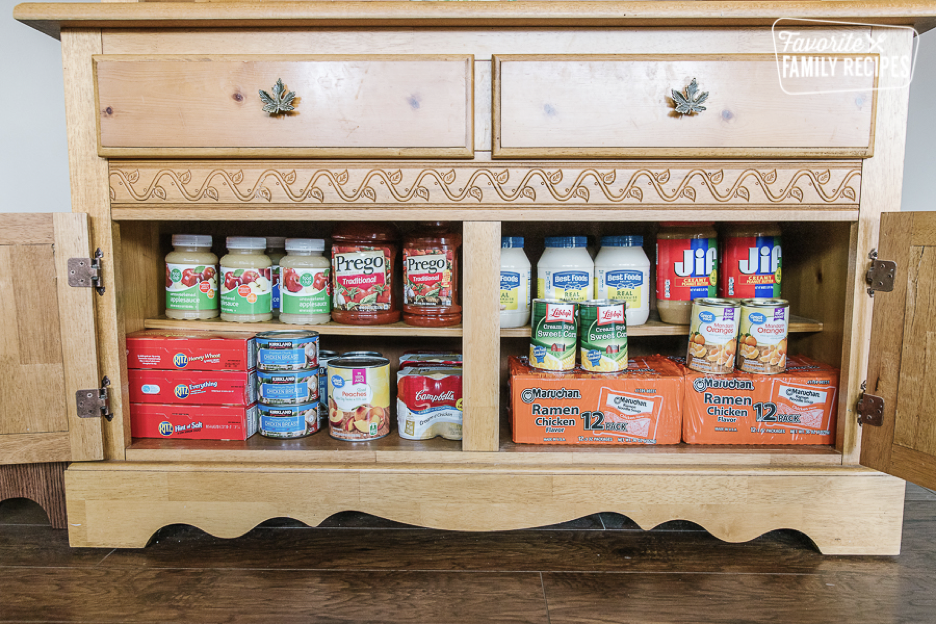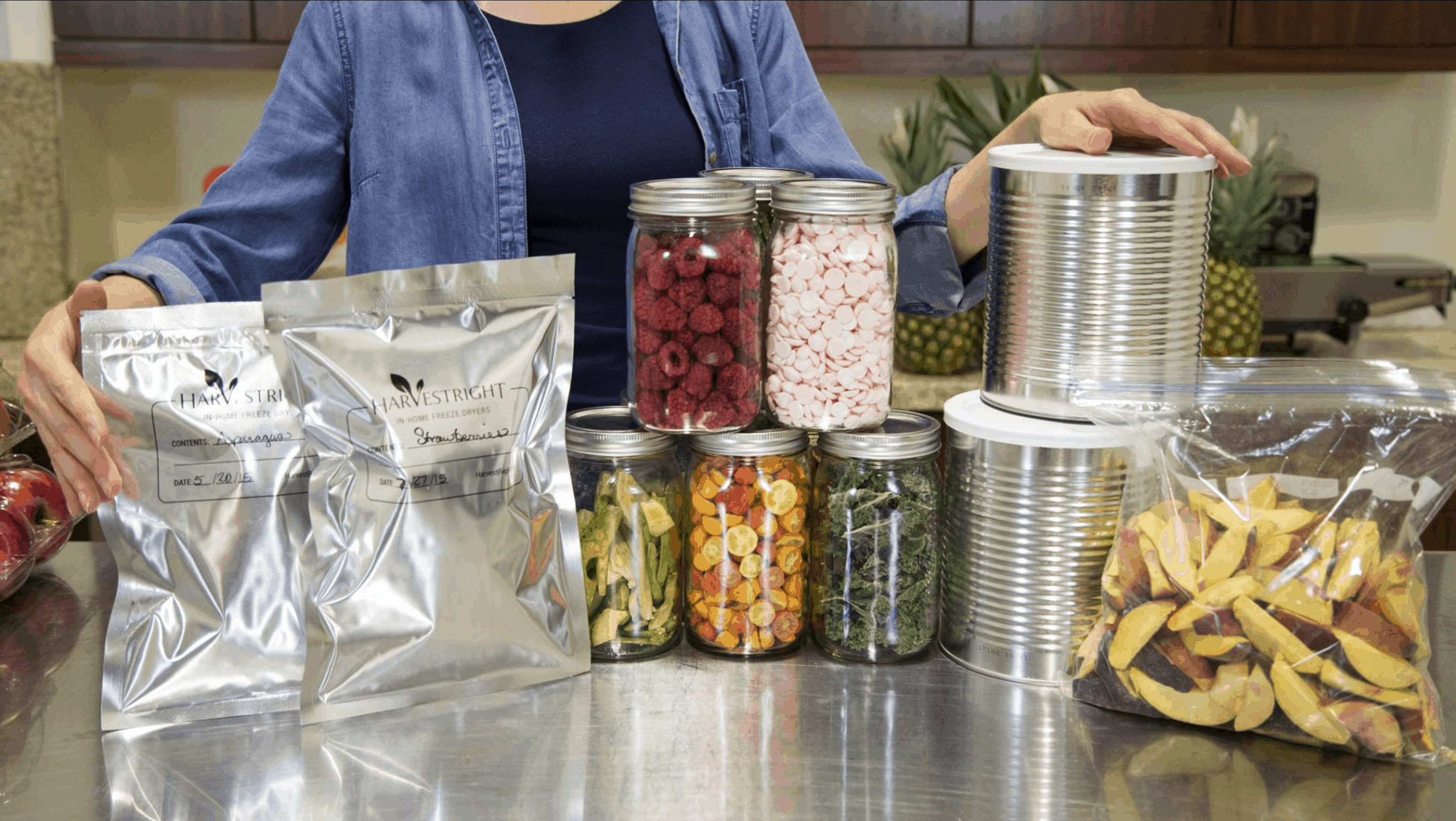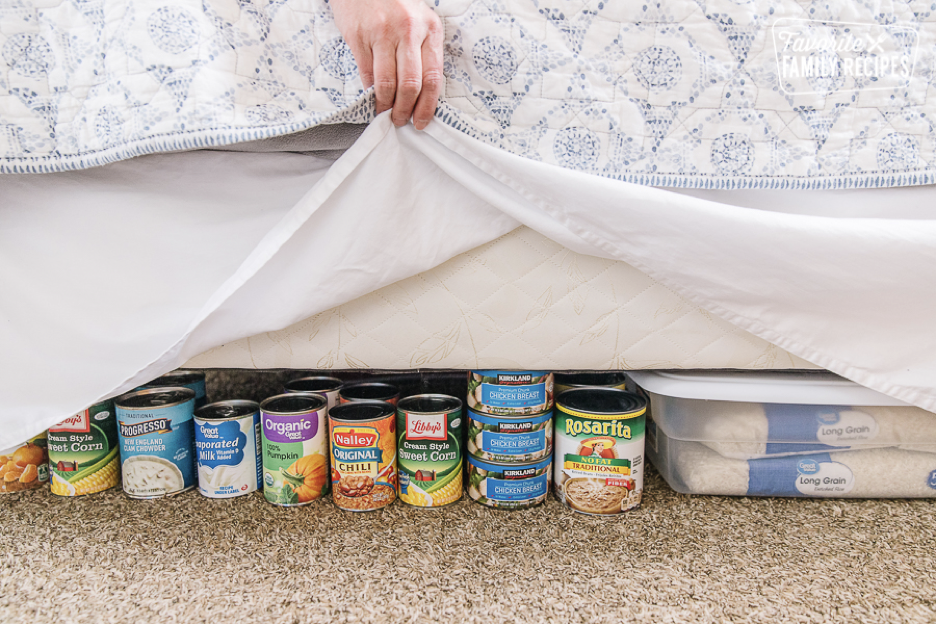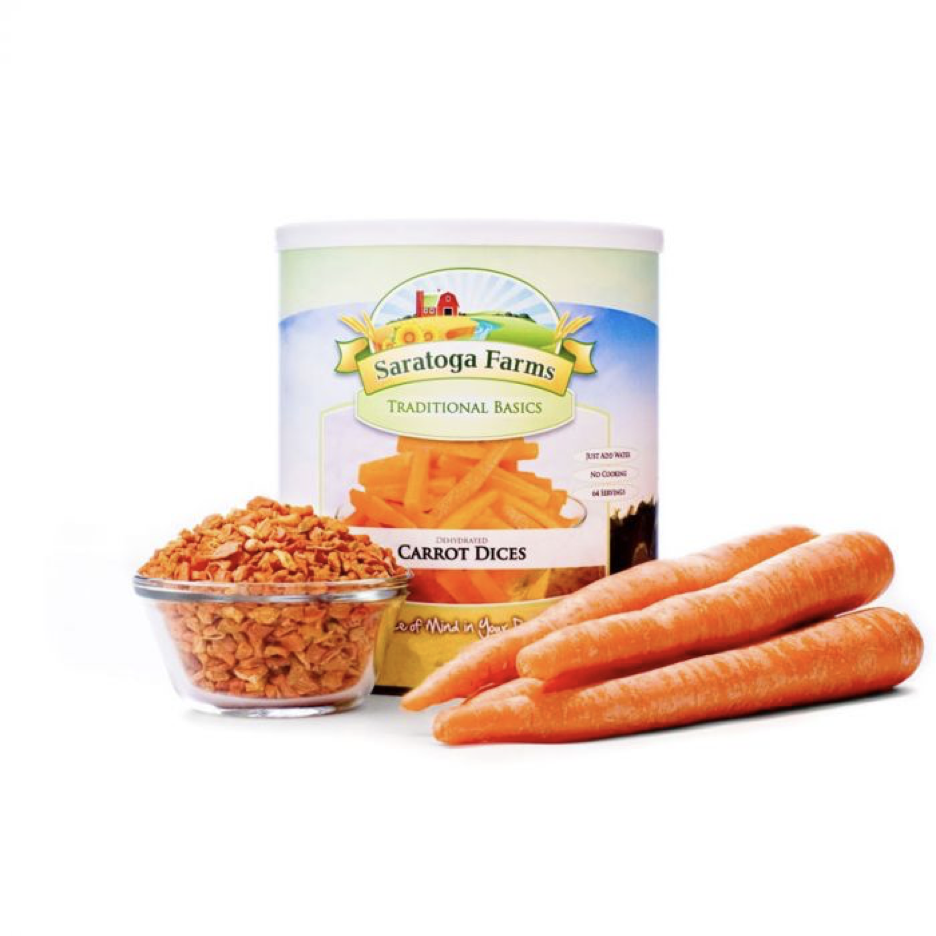It’s Wise to Prepare NOW, So You Can Cope Later!
What with all the talk around government shut-downs, the state of our economy, and the disruptions so many have dealt with from natural disasters this past year, I thought it would be timely to chat about food storage. I like to think of the whole idea in terms of “preparing NOW so I can cope LATER.”

Philosophy on storing food has shifted a lot over the last three or four decades. The most common advice today is to store what you and your family eats on a regular basis, and then eat that. Replenishing as you go.
So, if your family really likes Rice Chex® for breakfast and as a before-bedtime snack, then it makes sense to buy extra boxes for emergencies. If your family won’t eat any mayonnaise but Best Foods®, then buy a few extra jars. If your family counts on tomato soup and toasted cheese sandwiches every Saturday night, then be sure you have lots of canned tomato soup and maybe a few bricks of cheese in the freezer. If your toddler really loves Goldfish Crackers®, then it’d be smart to have a few extra packages on hand. You get the idea.

The point is, when tough times hit, life is hard enough without having to go without your favorite foods. And don’t let anyone shame you with the “You’re food hoarding!” attack. That’s nonsense! It’s simply wise planning, which factors in the need to minimize the stress that comes with emergencies and disasters. Having plenty of favorite foods on hand does just that.
Afterall, if you don’t plan ahead to take care of those you love, who will? AND (and this is a biggie), if you have extra food on hand, guess who can help your local food bank when their inventory runs dangerously low!?
Further advice on storing food includes varying the type of storage you’re incorporating. You want a mix of frozen foods, canned foods, and dehydrated and freeze-dried foods. We’ve found that dehydrated and freeze-dried fruits and veggies are especially satisfying when you can’t get your hands on the fresh stuff. Storing this way is a good hedge if you lose power for any length of time—only the food in the freezer may be affected. You still have the canned and dried foods from which to draw.

A good place to start with dehydrated or freeze-dried vegetables is carrots. This is because they’re very affordable and they are full of essential vitamins and minerals. Besides being an effective way to add vitamin A and minerals, they’re delicious in soups and stews. According to storage specialist, Cathy Merrill, one two-pound can of dried carrots is equal to approximately 17 pounds of fresh carrots. And diced and dehydrated carrots have a shelf life of 10 years under ideal storage conditions.
And what are “ideal storage conditions?” The best storage area is consistently cool, dark, and dry. You also want ample room organize it so you can see what you have and what you need. You want to be able to rotate your supply as well. Always put the most recent purchases in the back; the approach is to use oldest foods first. Good lighting is also important, obviously, so you can easily see your way around and be able to see, again, what you have and what you need more of.
BUT, if you don’t have ideal conditions, store some food anyway. There are plenty of places even if you’re limited on spaces. A case of tuna will store easily under a couch, for instance. And there’s loads of space under most beds. Just be sure to note (maybe on a 3x5 card) what you’re storing and where, for easy retrieval.

Let’s go back to the above-mentioned dehydrated carrots. Cathy gives some tips for rehydrating the carrot dices:

Finally, how about a delicious recipe that calls for dehydrated carrots? Remember, we want to store what we eat and we eat what we store. This recipe makes it easy to do that! You’ll like how convenient dried carrots are, as well. They’re a real shortcut to any recipe calling for cooked carrots. This recipe comes from an inspiring site, Beyond the Chicken Coop (www.beyondthechickencoop.com/carrot-cookies-with-orange-glaze).

1 cup cooked, mashed carrots
3/4 cup sugar
1 cup butter (softened)
1 egg
1 teaspoon vanilla extract
2 cups flour
2 teaspoons baking powder
1/4 teaspoon salt
GLAZE
1 1/2 cups powdered sugar
3 tablespoons orange juice
1 tablespoon grated orange rinds
Directions:
Add Recipe to Cook'n

Philosophy on storing food has shifted a lot over the last three or four decades. The most common advice today is to store what you and your family eats on a regular basis, and then eat that. Replenishing as you go.
So, if your family really likes Rice Chex® for breakfast and as a before-bedtime snack, then it makes sense to buy extra boxes for emergencies. If your family won’t eat any mayonnaise but Best Foods®, then buy a few extra jars. If your family counts on tomato soup and toasted cheese sandwiches every Saturday night, then be sure you have lots of canned tomato soup and maybe a few bricks of cheese in the freezer. If your toddler really loves Goldfish Crackers®, then it’d be smart to have a few extra packages on hand. You get the idea.

The point is, when tough times hit, life is hard enough without having to go without your favorite foods. And don’t let anyone shame you with the “You’re food hoarding!” attack. That’s nonsense! It’s simply wise planning, which factors in the need to minimize the stress that comes with emergencies and disasters. Having plenty of favorite foods on hand does just that.
Afterall, if you don’t plan ahead to take care of those you love, who will? AND (and this is a biggie), if you have extra food on hand, guess who can help your local food bank when their inventory runs dangerously low!?
Further advice on storing food includes varying the type of storage you’re incorporating. You want a mix of frozen foods, canned foods, and dehydrated and freeze-dried foods. We’ve found that dehydrated and freeze-dried fruits and veggies are especially satisfying when you can’t get your hands on the fresh stuff. Storing this way is a good hedge if you lose power for any length of time—only the food in the freezer may be affected. You still have the canned and dried foods from which to draw.

A good place to start with dehydrated or freeze-dried vegetables is carrots. This is because they’re very affordable and they are full of essential vitamins and minerals. Besides being an effective way to add vitamin A and minerals, they’re delicious in soups and stews. According to storage specialist, Cathy Merrill, one two-pound can of dried carrots is equal to approximately 17 pounds of fresh carrots. And diced and dehydrated carrots have a shelf life of 10 years under ideal storage conditions.
And what are “ideal storage conditions?” The best storage area is consistently cool, dark, and dry. You also want ample room organize it so you can see what you have and what you need. You want to be able to rotate your supply as well. Always put the most recent purchases in the back; the approach is to use oldest foods first. Good lighting is also important, obviously, so you can easily see your way around and be able to see, again, what you have and what you need more of.
BUT, if you don’t have ideal conditions, store some food anyway. There are plenty of places even if you’re limited on spaces. A case of tuna will store easily under a couch, for instance. And there’s loads of space under most beds. Just be sure to note (maybe on a 3x5 card) what you’re storing and where, for easy retrieval.

Let’s go back to the above-mentioned dehydrated carrots. Cathy gives some tips for rehydrating the carrot dices:
- When incorporating them in a recipe, measure them AFTER rehydrating. Carrots will swell to at least twice their size. If merely adding “some” carrots to a soup or stew with lots of liquid, rehydration is unnecessary.
- Pour 2 cups of boiling water per 1 cup of carrot dices (i.e., twice the amount of boiling water as the amount of dried carrots).
- Let stand for 20 minutes.
- Drain any remaining water and measure rehydrated carrots for desired recipe. But when draining, don’t throw out vitamins! Use that drained carrot water in your recipe or [my tip] reserve it for other uses by storing it either in the fridge or make “vitamin cubes” with it by freezing it in an ice cube tray.
- Excess rehydrated carrots may be refrigerated and used within 3-5 days.

Finally, how about a delicious recipe that calls for dehydrated carrots? Remember, we want to store what we eat and we eat what we store. This recipe makes it easy to do that! You’ll like how convenient dried carrots are, as well. They’re a real shortcut to any recipe calling for cooked carrots. This recipe comes from an inspiring site, Beyond the Chicken Coop (www.beyondthechickencoop.com/carrot-cookies-with-orange-glaze).

Carrot Cookies with Orange Glaze
Ingredients:
1 cup cooked, mashed carrots
3/4 cup sugar
1 cup butter (softened)
1 egg
1 teaspoon vanilla extract
2 cups flour
2 teaspoons baking powder
1/4 teaspoon salt
GLAZE
1 1/2 cups powdered sugar
3 tablespoons orange juice
1 tablespoon grated orange rinds
Directions:
1. In a mixer, blend butter and sugar together.
2. Add vanilla and egg and mix until well combined.
3. Add mashed carrots and combine.
4. Mix flour, baking powder and salt together. Add to mixing bowl and combine.
5. Cover and refrigerate for at least 1 hour.
6. Using a cookie dough scoop, scoop small balls onto cookie sheet lined with parchment paper or lightly sprayed with a nonstick spray.
7. Bake at 375 degrees for 12-15 minutes.
8. Allow cookies to cool on baking sheet before glazing.
9. Combine glaze ingredients and dip the top of each cookie into the glaze. Allow glaze to become firm before serving.
2. Add vanilla and egg and mix until well combined.
3. Add mashed carrots and combine.
4. Mix flour, baking powder and salt together. Add to mixing bowl and combine.
5. Cover and refrigerate for at least 1 hour.
6. Using a cookie dough scoop, scoop small balls onto cookie sheet lined with parchment paper or lightly sprayed with a nonstick spray.
7. Bake at 375 degrees for 12-15 minutes.
8. Allow cookies to cool on baking sheet before glazing.
9. Combine glaze ingredients and dip the top of each cookie into the glaze. Allow glaze to become firm before serving.
Recipe formatted with the Cook'n Recipe Software from DVO Enterprises.
Sources:
- www.france24.com
- www.favfamilyrecipes.com
- www.healthstartsinthekitchen.com
- www.dailybread.com
- www.beyondthechickencoop.com
 Alice Osborne
Alice Osborne
Weekly Newsletter Contributor since 2006
Email the author! alice@dvo.com
